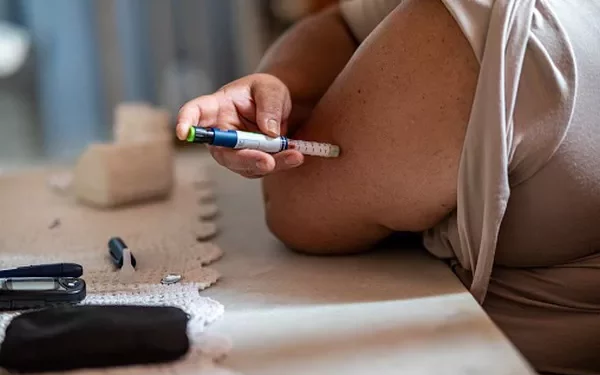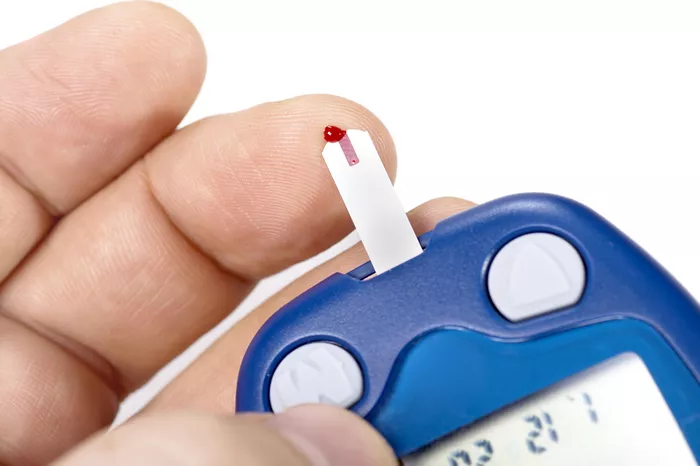Insulin resistance is a condition that affects millions of people worldwide and is a precursor to more serious health conditions like type 2 diabetes, obesity, and metabolic syndrome. While the metabolic and cardiovascular risks associated with insulin resistance are widely known, one of the less-discussed symptoms of insulin resistance is the development of skin tags, which are small, benign growths that commonly appear on the skin’s surface.
In this article, we will explore the relationship between insulin resistance and the formation of skin tags, what skin tags are, why they occur more frequently in people with insulin resistance, and what can be done about them.
What Is Insulin Resistance?
To understand the link between insulin resistance and skin tags, it’s important first to understand what insulin resistance is and how it affects the body. Insulin is a hormone produced by the pancreas that helps regulate blood sugar levels by facilitating the uptake of glucose (sugar) from the bloodstream into the body’s cells, where it can be used for energy.
Insulin resistance occurs when the body’s cells become less responsive to the effects of insulin. As a result, more insulin is needed to maintain normal blood glucose levels. Over time, this leads to an overproduction of insulin by the pancreas. Despite higher levels of circulating insulin, glucose remains in the bloodstream, leading to elevated blood sugar levels. This condition is a hallmark of prediabetes and type 2 diabetes.
Insulin resistance is commonly associated with obesity, metabolic syndrome, polycystic ovary syndrome (PCOS), and non-alcoholic fatty liver disease. It is also a significant risk factor for cardiovascular disease. While most people are aware of the serious health implications of insulin resistance, few realize that skin changes, particularly the development of skin tags, may be an early warning sign of this metabolic dysfunction.
What Are Skin Tags?
Skin tags, medically known as acrochordons, are small, soft, flesh-colored growths that typically hang off the skin by a narrow stalk called a peduncle. They are benign and usually painless, although they can become irritated if they are rubbed by clothing or jewelry. Skin tags can range in size from a few millimeters to a few centimeters in diameter and tend to appear in areas where the skin folds, such as the neck, armpits, groin, eyelids, and under the breasts.
While skin tags are generally harmless, they can be unsightly or bothersome for some people. They are most common in middle-aged and older adults, but they can appear at any age.
The Link Between Insulin Resistance and Skin Tags
Multiple studies have shown a correlation between insulin resistance and the formation of skin tags. People with insulin resistance, prediabetes, and type 2 diabetes are more likely to develop skin tags than those with normal insulin sensitivity. But what exactly is the connection between these two conditions?
The exact mechanism linking insulin resistance to skin tag formation is not fully understood, but several hypotheses have been proposed. Here are some of the leading theories:
1. Hyperinsulinemia and Growth Factor Stimulation
One of the most widely accepted theories is that hyperinsulinemia (excess insulin in the blood) plays a role in the formation of skin tags. In response to insulin resistance, the pancreas produces more insulin to compensate for the reduced sensitivity of the body’s cells. Over time, this chronic elevation in insulin levels can stimulate the production of growth factors that promote the growth of skin cells.
Specifically, insulin is known to stimulate insulin-like growth factor-1 (IGF-1), a hormone that promotes cellular growth and proliferation. IGF-1 receptors are present in various tissues, including the skin, and when activated by excess insulin or IGF-1, they may trigger the abnormal growth of skin cells, leading to the development of skin tags.
Additionally, IGF-1 plays a role in the formation of collagen and other components of the skin’s extracellular matrix, which could further contribute to the development of skin tags.
2. Obesity and Skin Friction
Insulin resistance is strongly associated with obesity, particularly the accumulation of visceral fat (fat around the organs). Obesity itself is a risk factor for skin tags, largely due to increased skin friction in areas where folds of skin rub against each other, such as the neck, armpits, and groin. Repeated friction can cause irritation and inflammation, which may lead to the formation of skin tags as a protective response by the skin.
Moreover, people with insulin resistance tend to have higher levels of inflammation throughout their bodies. This chronic low-grade inflammation may contribute to abnormal skin growth and the development of skin tags in areas of increased friction.
3. Hormonal Imbalances
Insulin resistance is often accompanied by hormonal imbalances, particularly in conditions like polycystic ovary syndrome (PCOS). PCOS is characterized by elevated levels of androgens (male hormones) in women, which can cause various skin changes, including the development of skin tags, acne, and excessive hair growth (hirsutism).
Androgens are known to stimulate the growth of skin cells and hair follicles, and in the presence of insulin resistance, this hormonal imbalance may further contribute to the development of skin tags.
4. Acanthosis Nigricans: A Related Skin Condition
Another skin condition closely associated with insulin resistance is acanthosis nigricans, which causes dark, velvety patches of skin in body folds and creases, particularly in the neck, armpits, and groin. Like skin tags, acanthosis nigricans is thought to be triggered by high levels of insulin and IGF-1, which stimulate the growth of skin cells and increase pigmentation.
The presence of acanthosis nigricans is often considered a sign of insulin resistance and can coexist with skin tags. Both conditions may indicate underlying metabolic dysfunction and should prompt further investigation and management.
Risk Factors for Skin Tags in People With Insulin Resistance
While insulin resistance is a key factor in the development of skin tags, several other risk factors can increase the likelihood of their occurrence in people with this condition:
1. Obesity:
As mentioned earlier, obesity is a significant risk factor for skin tags due to increased skin friction and chronic inflammation. The higher the body mass index (BMI), the greater the risk of developing skin tags.
2. Age:
Skin tags are more common in middle-aged and older adults. As insulin resistance tends to develop gradually over time, the risk of skin tags increases with age, particularly in people with metabolic syndrome or type 2 diabetes.
3. Genetics:
There may be a genetic predisposition to developing skin tags, particularly in families with a history of insulin resistance, obesity, and diabetes. Genetic factors may influence how the body responds to insulin and the growth factors that promote skin tag formation.
4. Hormonal Changes:
Hormonal changes, such as those that occur during pregnancy or in conditions like PCOS, can increase the risk of skin tags. Pregnancy-related insulin resistance and elevated hormone levels can contribute to the formation of skin tags, particularly in areas of the body where skin folds and rubs together.
5. Poor Diet and Sedentary Lifestyle:
A diet high in refined sugars, processed foods, and unhealthy fats can exacerbate insulin resistance and contribute to the development of skin tags. A sedentary lifestyle further increases the risk by promoting weight gain and reducing insulin sensitivity.
Managing Insulin Resistance and Preventing Skin Tags
Although skin tags are harmless, their presence may be a sign of underlying insulin resistance, which requires medical attention. Managing insulin resistance through lifestyle changes and, in some cases, medication can help prevent the formation of new skin tags and improve overall health.
1. Weight Loss:
Losing weight is one of the most effective ways to improve insulin sensitivity and reduce the risk of skin tags. Even a modest reduction in body weight can significantly improve metabolic health and decrease the production of excess insulin.
2. Healthy Diet:
A diet rich in whole grains, lean proteins, fruits, vegetables, and healthy fats can help regulate blood sugar levels and reduce insulin resistance. Avoiding refined sugars and processed foods is essential for improving insulin sensitivity and preventing further skin tags from developing.
3. Regular Exercise:
Physical activity improves insulin sensitivity by helping the body use glucose more efficiently. Aim for at least 30 minutes of moderate exercise most days of the week to improve metabolic health and reduce the risk of skin tags.
4. Medication:
In some cases, lifestyle changes may not be enough to manage insulin resistance, and medication may be necessary. Medications such as metformin can help lower blood sugar levels and improve insulin sensitivity. It is important to work with a healthcare provider to determine the best treatment plan.
5. Skin Tag Removal:
If skin tags become bothersome or unsightly, they can be removed by a healthcare provider through various methods, including cryotherapy (freezing), electrocautery (burning), or surgical excision. However, removing skin tags does not address the underlying cause, and new tags may form if insulin resistance is not managed.
See also: How Long Does It Take to Fix Insulin Resistance?
Conclusion
While skin tags are often considered a cosmetic concern, they can be an indicator of underlying insulin resistance and metabolic dysfunction. The connection between insulin resistance and skin tags lies in the body’s hormonal responses, particularly the overproduction of insulin and the stimulation of growth factors that promote abnormal skin growth.
Managing insulin resistance through weight loss, a healthy diet, regular exercise, and, in some cases, medication can help prevent the formation of new skin tags and reduce the risk of more serious health complications. If you notice the development of skin tags, especially in combination with other symptoms of insulin resistance, it is essential to consult a healthcare provider for proper evaluation and management.
Related topics:
How to Break Insulin Resistance to Lose Weight

























